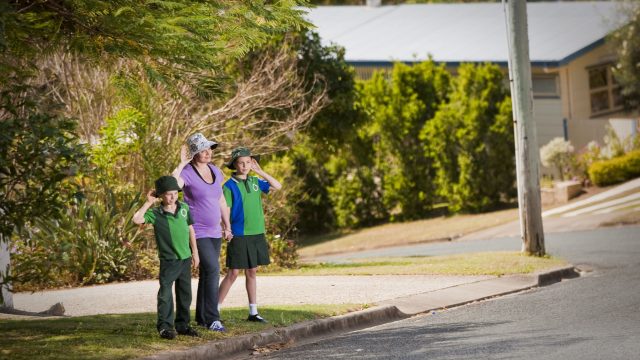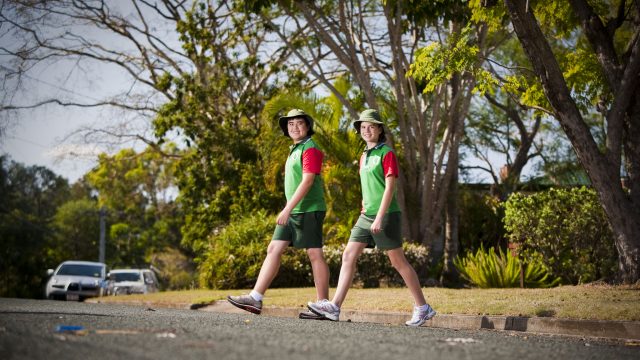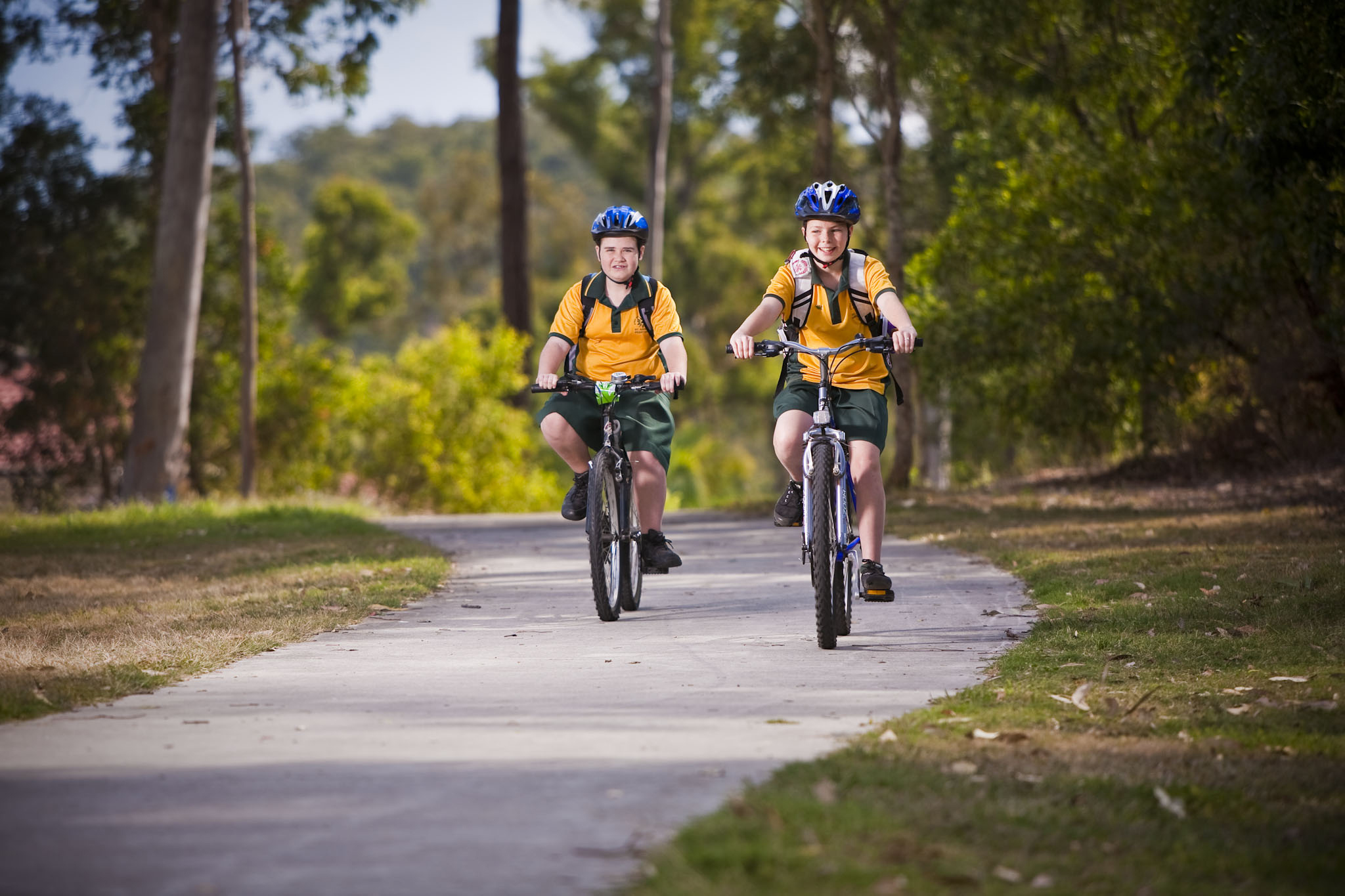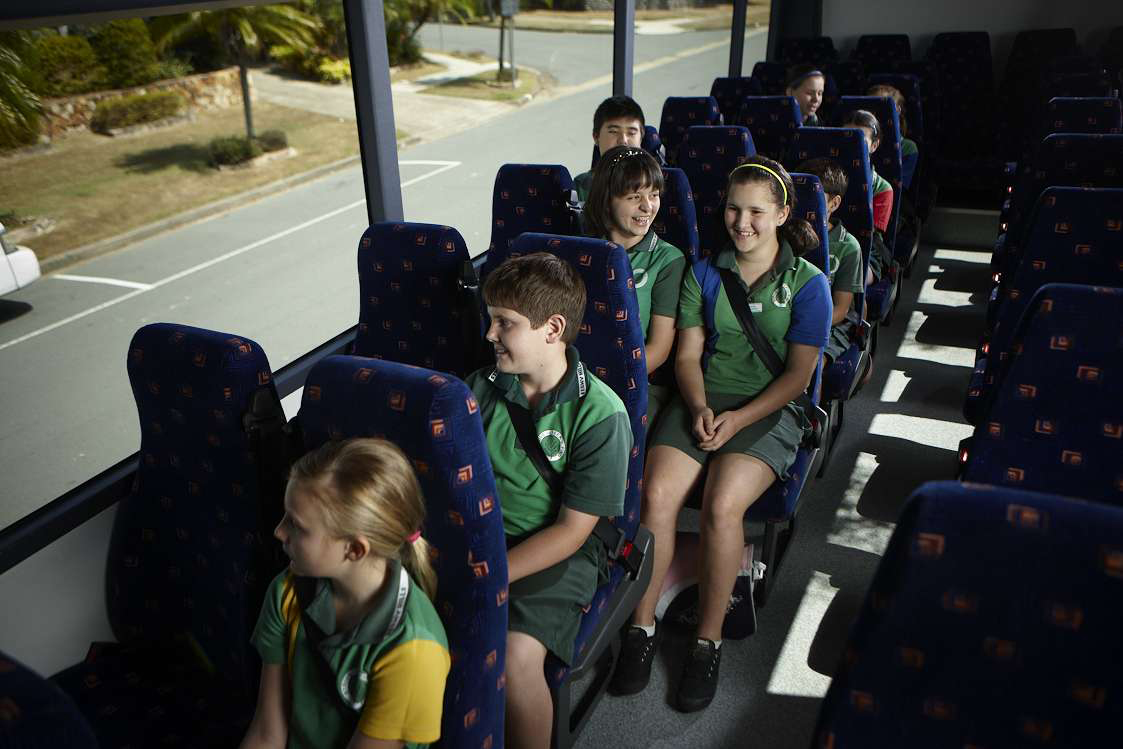Getting to school safely

Tips for walking
If your child is about to walk to school for the first time, you can help them get there safely by taking them on a practice walk on the route they’ll be taking before the term starts!
Parents can also teach children to:
- cross at traffic lights when the walking signal is green
- use pedestrian crossings whenever possible
- walk on the footpath or nature strip where possible. If they have to walk on the road, they should walk on the side facing oncoming traffic
- leave balls or sports equipment alone while walking. Items can fall or bounce onto the road
- wear a hat, sunscreen and comfortable supportive shoes.
Crossing the road
STOP, LOOK, LISTEN, THINK & GO
While it’s always safest to cross the road at a pedestrian crossing, traffic signals, or pedestrian refuges – sometimes there isn’t one nearby. Parents can teach their kids to cross the road with five simple steps: ‘STOP, LOOK, LISTEN, THINK and GO.’ Drivers should always remember to slow down and watch out for kids crossing the road particularly around schools.

1. STOP
STOP one step back from the footpath or shoulder of the road if there is no footpath.

2. LOOK 3. LISTEN
LOOK in all directions for approaching traffic. Can they be seen by drivers? LISTEN for approaching traffic.

4. THINK
THINK about whether it is safe to cross the road – when the road is clear, or all traffic has stopped at a crossing. Then GO.

Riding to school
Not only is riding to school healthy for kids, it is also fun! If your child is in primary school, you can ride with them until they are confident. Once they have the skills and feel safe on their bike, try to find a friend from their school they can ride with.
Parents can teach children riding to school:
- the safest route to school using bike paths, footpaths (for primary kids) or suburban streets
- the road rules and what road signals and signs mean
- what to do in an emergency
- bike hand signals to let others know where they are going
- to ride wearing correctly fitted helmets
- to prepare for the unexpected, be tolerant towards others mistakes and courteous to others using the road.
Scooters
Riding an e-scooter or non-motorised scooter is a quick and fun way for kids to get to school! For parents it’s easy to walk alongside a child on a scooter. Riders are not legally required to wear a helmet when using human-powered wheeled recreational devices. However, a helmet is required if the scooter has an electric motor.
On top of following the general road rules a there are a few different rules in place for riders that ensure a safer ride:
E-scooters
- always wear a helmet strapped correctly
children must be at least 16 years old to ride an e-scooter to school alone
- stay under 12km/hr limit on footpaths and shared paths or the 25/km/hr limit on bike paths and roads
- sound your bell to warn pedestrians as you approach
- avoid using a mobile phone.
To learn about all the rules for riders visit our Personal Mobility Devices information hub.
Non motorised scooters
- keep to the far left-hand side of the road and to the left of a footpath
- give way to foot pedestrians on a footpath and bike riders on a bike path or lane
- don’t travel on a road with a speed limit greater than 50km/hr, with a median strip, centre line or 1 way road with more than 1 marked lane.
Local governments often have local laws prohibiting the use of wheeled recreational devices and wheeled toys on busy roads and footpaths.
Contact your local council for more information on local laws in your area.

Public transport
Catching public transport can be a fast and safe way for your children to get to school. If your child is in primary school, you can walk them to and from their bus stop, train station or ferry terminal until they are confident to do it alone. It is always best to meet them at the stop and never across the road. Parents can also take their children for a practice run on their school routes!
Parents can teach children to:
- write down which bus, train or ferry they need to catch and where to get on and off
- check they have their go card ready to go before the bus, train or ferry arrives
- stand a safe distance from the platform where the bus, train or ferry arrives
- avoid calling out or being too loud as it can distract the driver
- wait for the bus to drive away before crossing the road.
Tips for carpooling
Sharing the driving with other parents reduces the number of cars on the road and amount of traffic around your child’s school. Plus, it is a great way to save money.
When carpooling:
- meet the other parents in the carpool before the first pick up or drop off
- exchange contact details with the other parents so that you can contact each other in an emergency
- make sure each driver has a valid licence and a safe vehicle
- make sure each driver knows the rules for driving with children and has the correct child restraints (such as booster seats).
